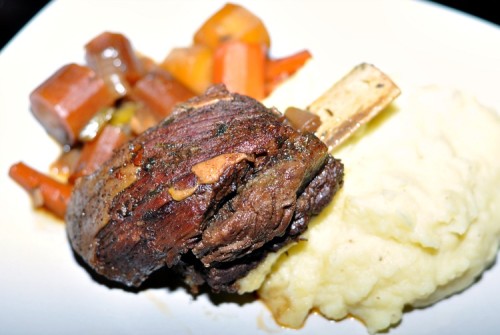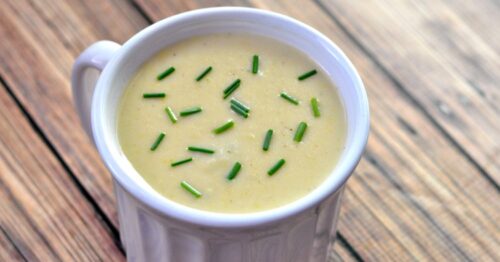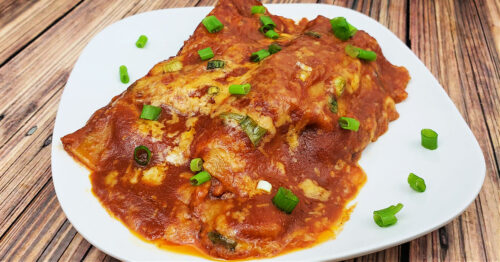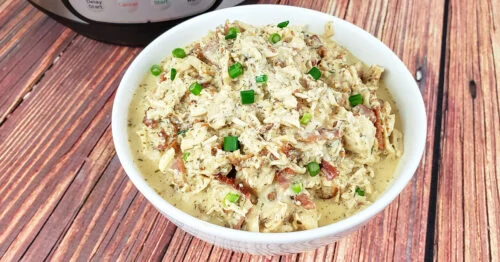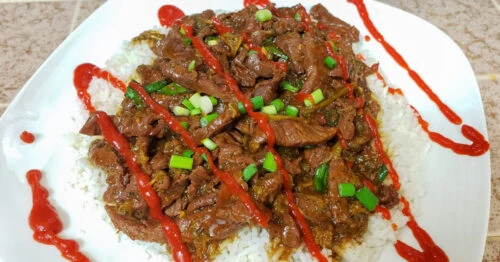Jump to Recipe
My family’s favorite fish is wild salmon. We love to bake it with yummy spices like Magic Salmon Seasoning or Old Bay Seasoning, but we also enjoy Poached Salmon with lemon, capers and rosemary.
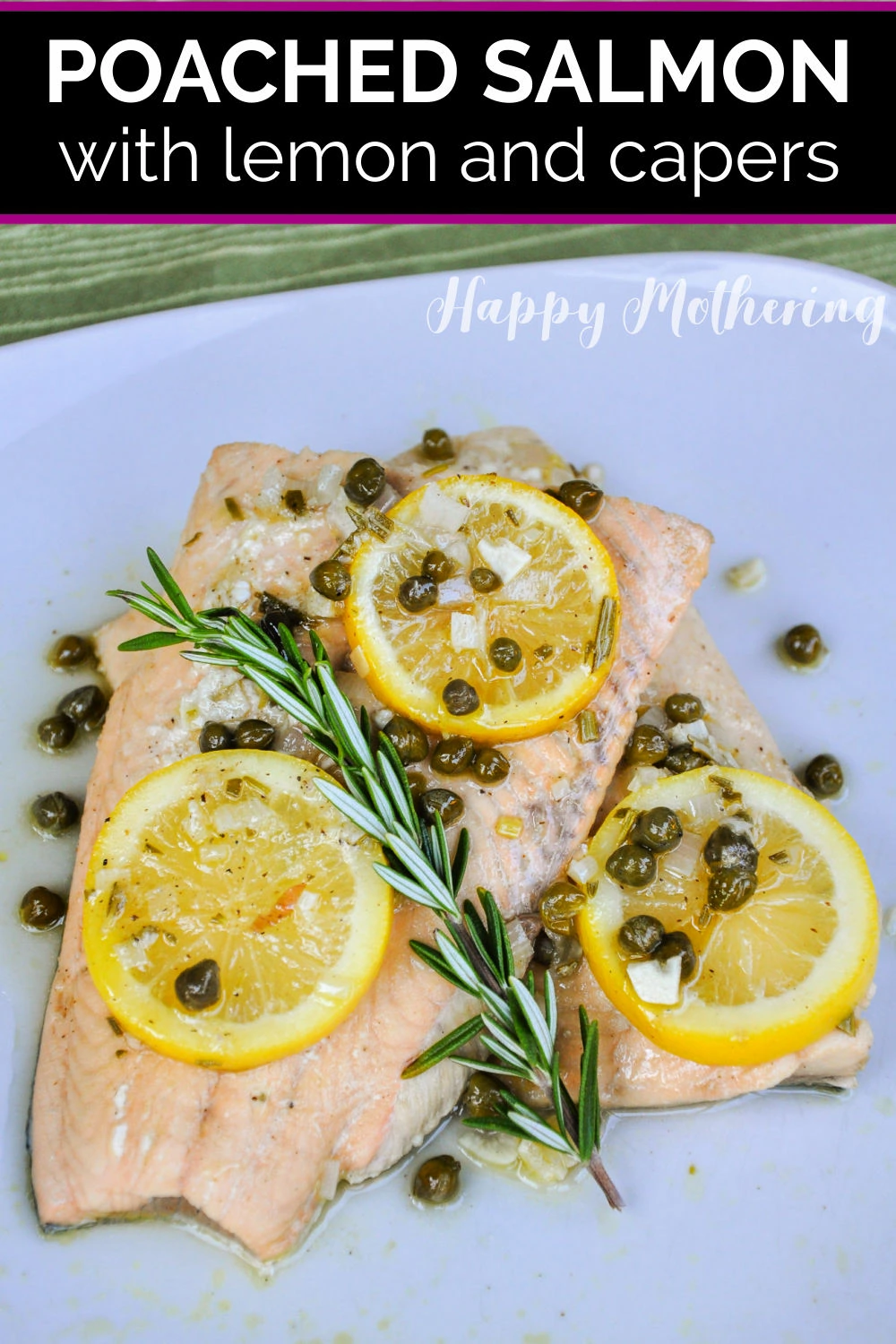
Poaching salmon on the stove top is one of the easiest ways to make it. There’s no need to thaw first either, so cooking salmon filets from frozen is a great method to learn if you like easy recipes for dinner.
This simple hack of cooking from frozen will allow you to have salmon prepared in as little as 15 minutes. And you may be surprised by all of the layers of flavor that this simple recipe gives salmon.
Make it for your family tonight and it’ll quickly become a favorite recipe to include in your healthy eating meal plans.
- Ingredients
- Equipment
- By the Numbers: How to Make Poached Salmon
- Tips for Making the Best Poached Salmon
- Tip: Remove pin bones from filets first
- How to tell when salmon is done
- Poaching thawed salmon
- White wine substitutions
- Using skinless salmon fillets
- Poaching whole fish
- Poaching other types of fish
- Best side dishes to serve with poached salmon
- Storing leftovers
- Where to buy salmon and seafood
- Meal planning tips
- Poached Salmon with Lemon, Rosemary & Capers
- More Gluten Free Dinner Recipes
Ingredients
- 12 ounces of salmon fillets
- 1 cup of dry white wine
- ¼ cup of extra-virgin olive oil
- ¼ cup of fresh-squeezed lemon juice
- 1-2 sliced lemons
- 1 tablespoon of minced rosemary
- 2 tablespoons of capers
- 2 tablespoons of minced shallots
- 4 cloves of roughly chopped garlic
- ½ teaspoon of sea salt
- ½ teaspoon of black pepper
- 2 cups of water
Equipment
- Knife
- Cutting Board
- Measuring cups and spoons
- Large cast iron skillet
- Spatula
By the Numbers: How to Make Poached Salmon
Follow the detailed instructions in this step by step guide to learn the best way to cook frozen salmon.
Step 1: Prepare Aromatic Poaching Liquid.
Combine 1 cup of white wine, ¼ cup of olive oil, ¼ cup of lemon juice, lemon slices from 1-2 lemons, 1 tablespoon of minced rosemary, 2 tablespoons of capers, 2 tablespoons of minced shallots and 4 chopped garlic cloves in a large skillet (I used a 12” cast iron skillet).
All of these ingredients will help build complex flavors for your salmon. Add enough water so the liquid reaches a depth of about 1 ½ inches of water. You want enough liquid for the salmon to be submerged in the aromatic poaching liquid. I used around 2 cups of water in my skillet.
Bring to a boil over medium high heat, then turn the down to low so the liquid is barely simmering.
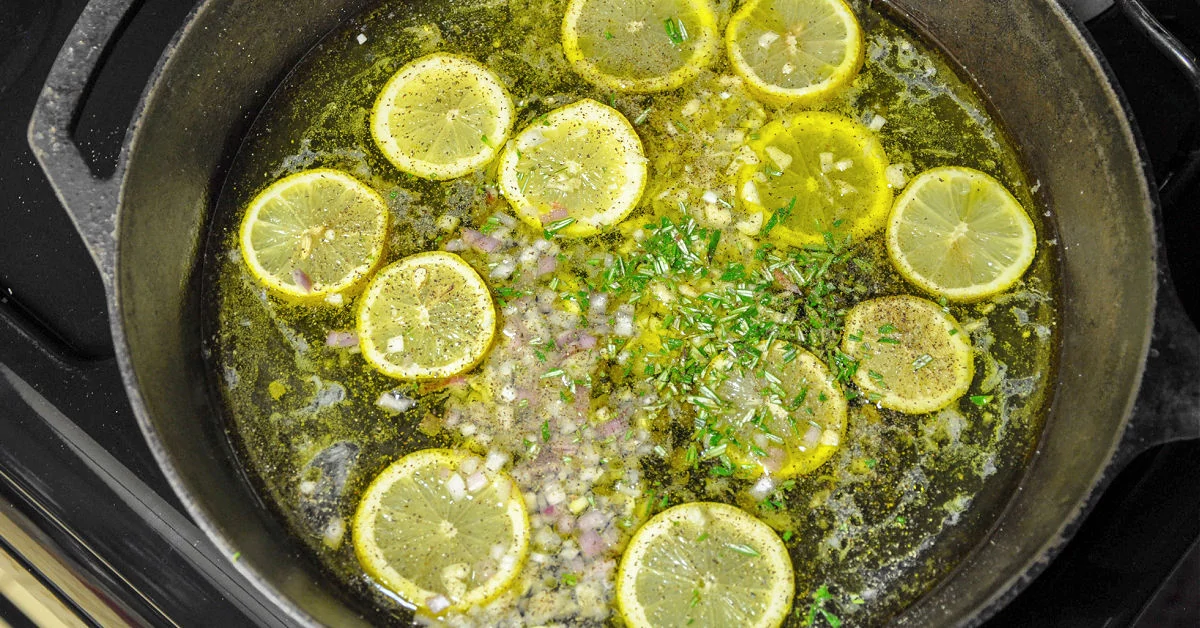
Step 2: Rinse Protective Ice Glaze.
Rinse each piece of your salmon under cold water to remove the protective ice glaze.
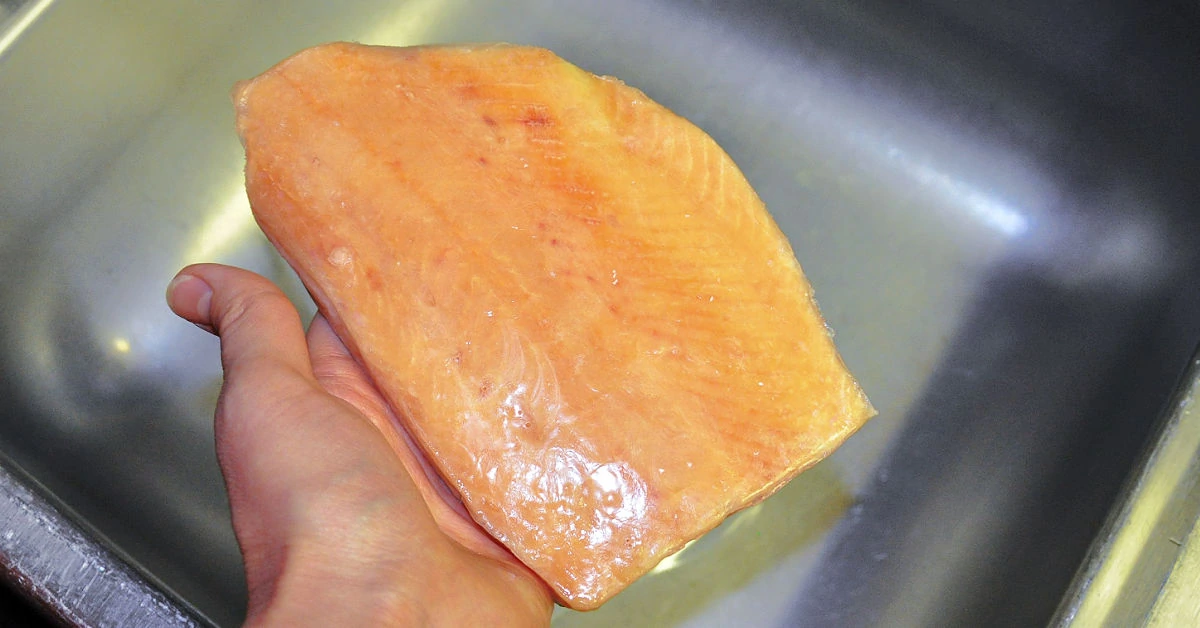
Step 3: Add Salmon to Pan.
Turn off the heat and place each of your pieces of salmon in the liquid, skin side down, in a single layer on the bottom of the pan. You wan tto make sure the salmon is submerged. If it’s not, you’ll want to add more water. Return the heat to a simmer, but make sure it doesn’t come to a boil.
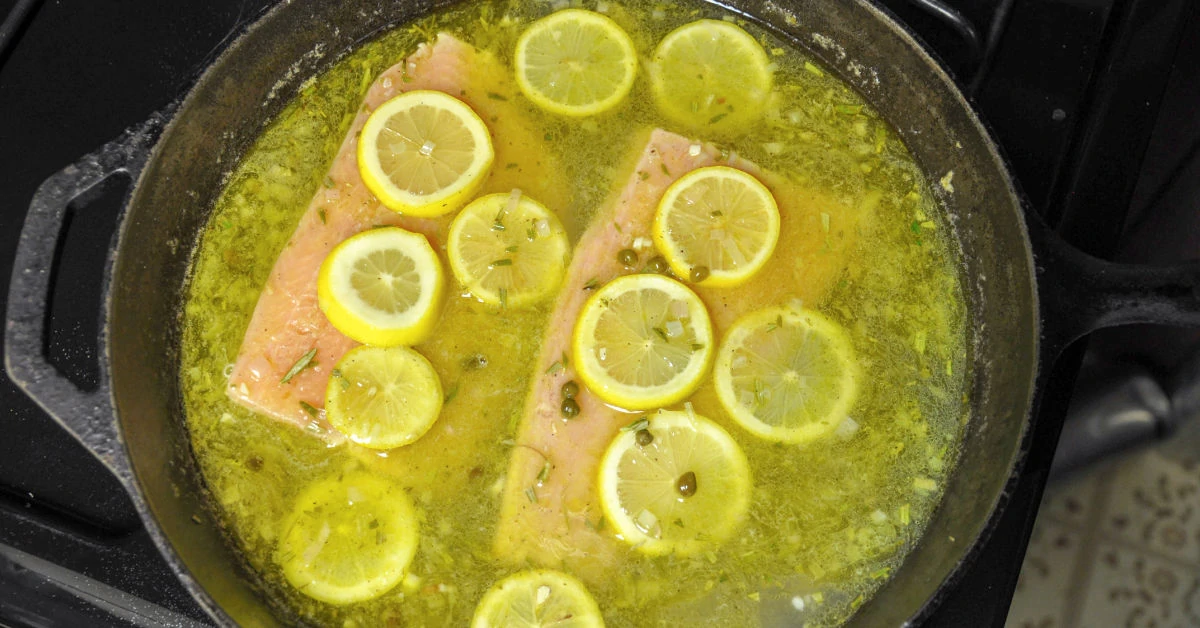
Step 4: Poach Salmon.
Once the salmon steaks are simmering, cover your pan tightly with a lid and cook for 5-10 minutes (shorter for smaller pieces and longer for larger pieces). Turn off the heat and allow the salmon to rest in the poaching liquid for 5 minutes or until it’s fully cooked through and opaque. It may take longer if you’re poaching larger pieces of fish.
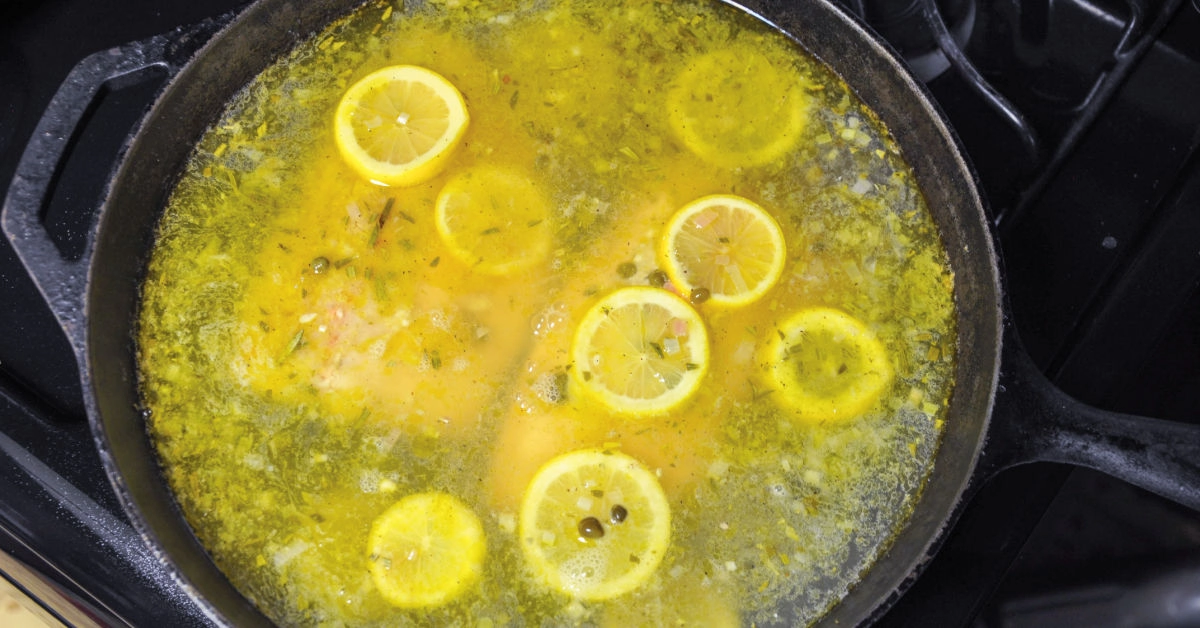
Step 5: Serve Poached Salmon.
Remove salmon filets from the pan and serve with your favorite sides like veggies and rice or potatoes.
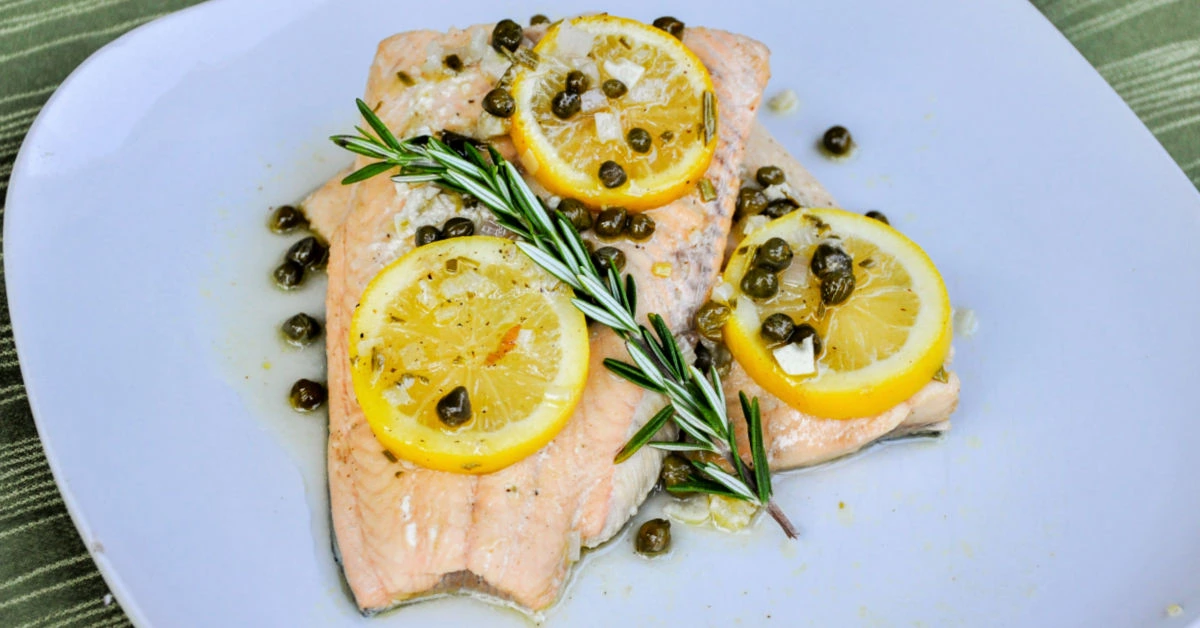
Tips for Making the Best Poached Salmon
Answers to all of your questions about making simple poached salmon from frozen, including tips and substitution ideas.
Tip: Remove pin bones from filets first
Many salmon filets you buy at the grocery store already have the pin bones removed. If yours doesn’t, you’ll want to make sure to remove them before cooking using needle nose pliers. If you’re new to cooking salmon and fish, check out this tutorial on removing pin bones.
How to tell when salmon is done
Salmon cooks at different rates, depending upon the thickness of the fillet. To test if it’s done, insert a meat thermometer into the thickest part of a piece of cooked salmon. The minimum internal temperature should be 145˚F.
Smaller pieces of salmon will have shorter cook times and larger pieces will need a longer cooking time.
Poaching thawed salmon
Yes, a thawed piece of fish will cook much faster than a frozen one. You usually need about half the cook time for fresh vs frozen with this cooking technique.
White wine substitutions
If you prefer to poach your salmon without a dry white wine, you can add the juice of a couple extra lemons instead. That will help balance the flavor of the fish.
Another alcohol-free option is white wine vinegar. Since it’s much more acidic than white wine, you’ll want to dilute it at a 1:1 ratio with water.
While you’re experimenting with flavors, you can also try swapping the rosemary for fresh dill or a few thyme sprigs with fresh parsley.
Using skinless salmon fillets
Poaching is a great way to cook skinless salmon as well. It may cook faster and flake apart a bit more than salmon that still has its skin, so watch carefully as it cooks and be gentle when you remove it from the pan.
Poaching whole fish
You can also poach whole fish with this method. You’ll need a larger pan (or salmon poacher), more liquids and more fresh herbs. It can take up to an hour to poach a whole salmon.
Poaching other types of fish
Yes, I love to poach fish fillets for easy dinners. The best poaching fish will have firm flesh so they won’t break apart. Some good choices besides salmon are tuna, halibut, mahi mahi and swordfish.
Best side dishes to serve with poached salmon
This poached salmon recipe has a really fresh flavor, so two of my favorite sides to serve with it are Oven-Roasted Bok Choy and Hasselback Potatoes. You can bake them in the oven while the salmon is poaching on the stove top.
Another favorite combination is salmon with Instant Pot Mashed Potatoes and Brussels Sprouts with Bacon. The flavors of this combo are so comforting and delicious.
Or you can make a yummy salmon salad by putting it on top of a big green salad loaded with veggies. You can use a simple oil and vinegar dressing, or try our Italian Dressing recipe if you want something a bit more flavorful.
Storing leftovers
We usually only cook as much salmon as we plan to eat for that meal. If you have leftovers, store them in the refrigerator in an airtight container. Enjoy the next day scrambled with eggs for a healthy breakfast or added to a salad for lunch.
Where to buy salmon and seafood
There are a ton of websites that sell frozen and fresh seafood that is delivered to your door. One of my favorites is Wulf’s Fish because they have amazing Alaskan Salmon, but here’s a list of the best places to order seafood online.
Meal planning tips
I am huge into meal planning. If you plan all of your meals out for the month, it takes so much of the stress out of meal prep and actually saves money on grocery shopping too.
I use a Meal Planner Printable that I created to keep everything organized. You can get your own copy to help you plan your family’s meals more easily.
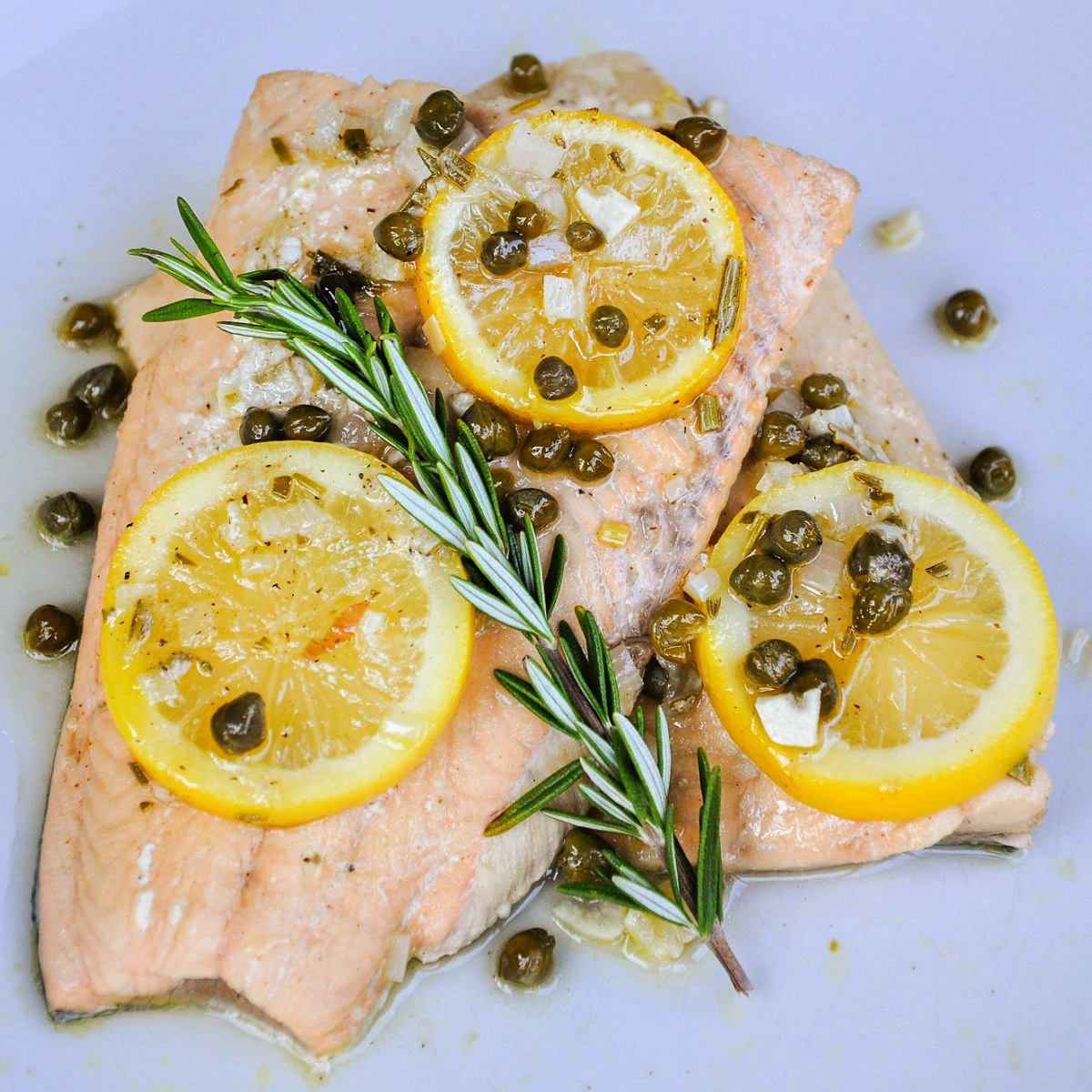
Poached Salmon with Lemon, Rosemary & Capers
Ingredients
- 12 ounces salmon fillets - 3-6 ounces per fillet
- 1 cup dry white wine - like Sauvignon Blanc
- ¼ cup extra-virgin olive oil
- ¼ cup fresh squeezed lemon juice - about 1 lemon
- 1-2 lemons - sliced
- 1 tablespoon fresh rosemary - minced
- 2 tablespoons capers
- 2 tablespoons shallots - minced
- 4 cloves garlic - roughly chopped
- ½ teaspoon sea salt - or kosher salt
- ½ teaspoon black pepper
- 2 cups cold water
Equipment
- Knife
- Cutting Board
- Measuring cups and spoons
- Large cast iron skillet
- Spatula
Instructions
- Combine the Sauvignon Blanc, olive oil, lemon juice, lemon slices, rosemary, capers, shallots and garlic in a large skillet. Add enough water so the salmon will be submerged (about 1 ½” of water). I needed approximately 2 cups of water. Bring to a boil over medium-high heat, then turn it down to allow simmer.
- Rinse your salmon under cold water to remove the protective ice glaze.
- Turn off the heat and add salmon to the liquid, skin side down, in the pan. If salmon isn’t submerged, add more water. Return heat to a simmer (don’t boil).
- Once everything is simmering, cover pan tightly and cook for 5-10 minutes. Turn off the heat and let the salmon rest in the liquid for 5minutes or until the poached salmon is completely opaque. It will take longer with larger pieces.
- Remove poached salmon filets from the pan and serve with your favorite sides.

